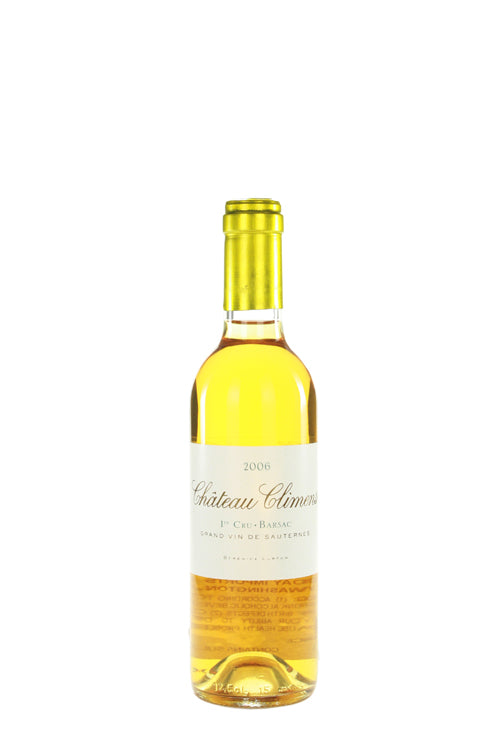Product Review
Proprietor Berenice Lurton continues to turn out one of the utterly profound wines from the Barsac Sauternes region. The 2006 is not up there with their perfect 2001, but it is a beautiful wine and stands out as one of the top wines of 2006. Medium gold, with a slightly more advanced color than I am used to seeing in a young Climens, the wine displays waxy honeyed pineapple and delicate marmalade and citrus notes with a restrained use of new oak. The wine cuts a full-bodied swath across the palate with terrific acidity, freshness, and moderate sweetness. This is a beauty, but perhaps on a much faster evolutionary track than some of their greatest vintages.
Semillon's contribution to quality wine often goes by unrecognized, however due to its base in Bordeaux and migration to the New World it was, at one point, the most planted variety. While its role as a varietal wine is diminishing it is still an important component in the famous dessert wines of Sauternes, and is increasingly being used in dry whites adding complexity to the Sauvignon Blanc and sometimes Chardonnay. One of the exceptions are the producers of Hunter Valley (Tyrell's and Brokenwood to name a few) in Australia who continue to carve out exceptional examples capable of long bottle maturation of more than 10 or 20 years.
Located in South West France, Bordeaux is one of the World’s most important wine producing regions. The Gironde estuary and its two tributaries, the Garonne and Dordogne, splits the region into the ‘left bank’ and ‘right bank’. The left bank, on the west side of the Gironde, consists of the Médoc and Graves, while Pomerol and St. Emilion are located on the right bank. In between the Garonne and Dordogne is the Entre-Deaux-Mers region, French for 'between two seas'. From north to south the Médoc includes the famous classed growth chateaux in the communes of St. Estephe, Paulliac, St.Julien, and Margaux. The Graves and it’s enclave Pessac-Léognan make both red and white wine. While those of Pessac- Léognan’s are dry, Sauternes and Barsac make world-famous sweet whites. Although Bordeaux makes some of the world’s most expsenive wines, less expensive but good value alternatives come from Moulis and Listrac on the left and Bourg and Blaye on the right offer less expensive wines for earlier consumption.
Sauternes is a remarkable region of Bordeaux whose wines, both sweet and unfortified, are unmatched by anything else in the world. It is the region's mesoclimate, in particular the proximity to The Garonne and its tributary the Ciron, which combine to create the ideal conditions. During fall, the cooler water from the Ciron meets the warmer tidal Garonne, causing mists to develop, blanketing the vineyards. The fluctuation between the humid mornings and warm drier afternoons provides the ideal environment for the benign fungus Botrytis cinerea, to thrive. The fungus consumes the grapes' water, concentrating its sugars and tartaric acid, which helps produce wines with beguiling exotic aromas and thick viscosity.
Dessert wines are usually any sweet wine drunk with or around a meal. White fortified wines (fino and amontillado sherry) are usually drunk before the meal, and the red fortified wines (port and madeira) drunk after it. Most fortified wines are regarded as distinct from dessert wines, but some of the less strong fortified white wines, are regarded as honorary dessert wines. In the United States a dessert wine is legally defined as any wine over 14% alcohol by volume, which includes all fortified wines.



